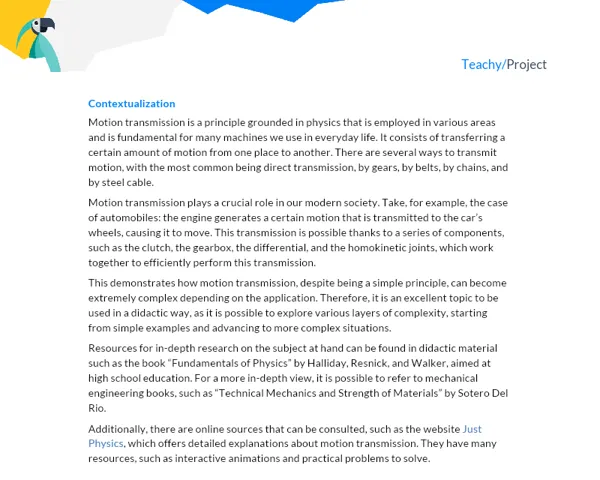Context
Vectors are fundamental elements in mathematics and physics. They are used to represent physical quantities that have both magnitude (size) and direction - such as velocity, force, and displacement. For example, it is not enough to say that a car is moving at 60 km/h. This information is only complete if we also know the direction in which the car is moving - north, south, east, or west. In these cases, we use vectors to represent this information.
Vectors are more than just arrows pointing in a direction. Each vector has a 'magnitude' (size), 'direction' (orientation to the north, south, east, west, or some intermediate direction), and 'sense' (the direction in which the arrow is pointing). Understanding these three components is essential to understand the nature of vectors and to be able to manipulate them mathematically.
Introduction
Vectors are a fundamental tool in physics because they allow us to describe the world around us accurately. Without vectors, we would be unable to describe the trajectory of a plane in the sky, the force of gravity on an object, or the speed of a car on the road. They are the language we use to describe motion and forces.
As you can imagine, vectors are not only useful in physics. They also have applications in fields as diverse as engineering, computer science, geography, biology, and much more. Any field that requires an accurate description of direction and magnitude will likely use vectors in some way.
To delve deeper into the subject, I suggest the following reliable sources:
- Khan Academy - Vectors
- Manual do Mundo - What is a vector?
- Só Física - Vectors
- Book: Fundamentals of Physics - Volume 1, Halliday & Resnick, 9th Edition.
Practical Activity
Activity Title: 'Vector Navigation: The art of moving objects using vectors'
Project Objective
The 'Vector Navigation' project aims to develop in students a practical understanding of the use of vectors. Students will be challenged to apply vector concepts to move an object from one point to another using vectors.
Detailed Project Description
Groups will be challenged to move a physical object (a small matchbox, for example) from point A to point B on a flat surface using vectors. This surface can be a table, the floor, or a large piece of cardboard.
Students will use ropes to create vectors that indicate the direction and magnitude of the movements needed to move the object from the initial position (point A) to the final position (point B).
To do this, they will need to calculate the module, direction, and sense of the vectors, using mathematical tools such as Trigonometry, for example. In addition, they will need to develop efficient team strategies to achieve the proposed objective.
Required Materials
- A small and light object (such as a matchbox)
- Ropes of different lengths
- Adhesive tape
- Ruler
- Protractor
- Flat surface (a table, the floor, a large piece of cardboard)
Detailed Step-by-Step for Activity Execution
- Divide the class into groups of 3 to 5 students.
- Define points A and B on the flat surface, which will be the starting and ending points of the object.
- Present the group with the object to be moved.
- Each group must then plan and calculate the vectors needed to move the object from point A to point B.
- Students should use the ropes to physically represent the vectors, considering the length of the rope as the module of the vector and the direction of the rope as the direction of the vector.
- Record the calculation and movement process in video or photos.
- All calculations and resolution strategies must be noted for later discussion and inclusion in the final report.
- At the end, students must present a report containing Introduction, Development, Conclusions, and Bibliography used.
The report should be written in the format of a scientific article and follow the following guidelines:
Introduction
In this section, students should contextualize the theme of vectors, their relevance, and application in the real world. Additionally, they should indicate the project's objective and how it was developed.
Development
In this section, students should explain the theory of vectors, how the planning and calculation of vectors were carried out, the methodology used, and present and discuss the results obtained.
Conclusion
Students should summarize their main points, explain the learnings obtained, and draw conclusions about the project.
Bibliography
Students should indicate the sources they relied on to work on the project such as books, web pages, videos, etc.


